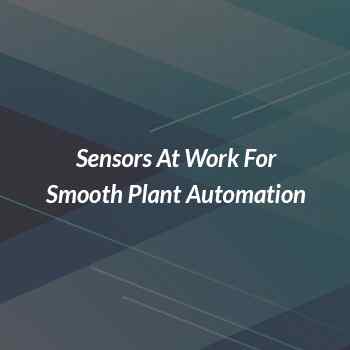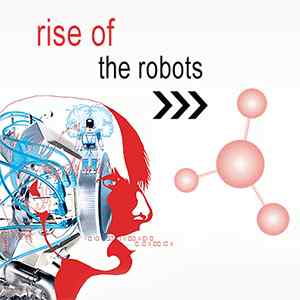The Right Guide In Choosing An Electric Motor

Over the past few years, electric motors have been observing several advancements in technology, owing to which its demand is gaining traction. The electric motors are widely used in applications such as household appliances, industrial machines, motor vehicles, and HVAC appliances. The major factors pushing the growth of electric motors during the forecast period are rising industrial activities as well as the growing demand for electric vehicles across the globe. Series, shunt, permanent magnetics, and others are different types of DC motors, while reluctance motors, synchronous machines, and others are different types of AC motors. The electric motors are commonly used in applications in OEM based products, compressors, industrial machinery, conveyor systems, pumps, and fans.
In 2017, the global electric motor market size was $96,967.9 million and is projected to reach $136,496.1 million in 2025, growing at a CAGR of 4.5%.
The AC and DC motors can be developed through the integration of electronic hardware and sensors, that offers predictive maintenance and reduces downtime during maintenance. Factors such as speed, acceleration, angular movements, control, and torque requirements make AC motors an ideal choice for robotic system manufacturers. Owing to the high efficiency of AC synchronous motors, the rise in demand for superior machine control in the automotive industry fuels the electric motor market growth. The growth of energy-efficient electric motors market across the world is driven by regulations such as the Minimum Energy Performance Standards (MEPS). Moreover, owing to heat dissipation the adoption of motors ranging from 21-60 V in HVAC motors is anticipated to exhibit high demand for these motors in the coming years.
Selection Criteria For Choosing An Electric Motor
The motor selection is often a complicated process as it takes a lot of work with different vendors and time to sort and evaluate quotes. The selection of the motor starts with evaluating the application and ensuring the motor chosen will correctly match the needs of the application. It is important to note that every application will have unique performance requirements that need to be evaluated using a checklist.
A) Input Power Source
The designers should pay attention to the maximum allowable current early in the selection process, as it's a consideration that often goes unnoticed. For example, in an application such as a medical patient lift using a standard electrical wall outlet, it's usually necessary to cut down the current to 15 amps just to avoid overloading the electrical circuit. The input power will be a known quantity and is easy to specify in the form of current, voltage, and frequency. A few applications will have a maximum allowable current draw which needs to be closely monitored. The selection of the motor is critical for applications sensitive to high current draw situations. Selecting a motor that runs at maximum efficiency at the application load point allows the designer to optimize performance to lessen the current draw. The use of control with current limiting capabilities can also be used to minimize the issue if motor optimization alone does not work.
B) Environment
Most of the shelf motors are built for a clean, dry, room temperature environment. A designer should consider a motor constructed for environmentally sensitive applications if the requirements of the project subject the motor to elements such as dust or water contamination. When choosing a motor, ambient temperature is also an important factor to take into consideration. Most of the motor windings are tested assuming that ambient temperatures will remain between 20°C and 40°C. The motor must be run at a derated load to maintain the integrity of the insulation system over the life of the product if the application requires the motor to run at temperatures above 40°C.
C) Motor Specs
One of the early considerations is the motor housing design when looking at new projects. The designer must understand the weight and size restrictions of the product to meet application needs. One application might require a long skinny motor whereas the next application could utilize a short fat motor. There might be a maximum allowable weight associated with the design if the application is a portable product, thus affecting the type of motor that should be selected.
Another key consideration in the selection process is the application life requirements. Does the application need 10,000 hours of maintenance-free running or will the motor run only 200 hours in the next 20 hours? The main components that could pose a concern to the life of a motor include the brushes, the commutator, and the bearings. In brush type motors, the brushes and commutator create the electrical connection, as the motor runs these components tend to wear down. Generally, a brush type motor will be an economical choice in limited use applications. To increase the longevity of a more economical brush-type motor, there are many designs available with replaceable brushes. It's best to select a motor design that does not require brushes for longer life applications. Hence, the only factor limiting motor life is the bearings. When specifying a motor and designing a system, noise is also an important factor to consider for many design engineers. Even though a noise test result read both motors at the same dB level, one motor can sound louder than another. Over the past several years, the sound has gotten more attention to the point that many motor manufacturers have invested in sound equipment and quiet rooms to better quantify sounds and associate them with the responsible component.
D) Motor Performance
Till now the characteristics of an application that might constrain the motor type selection had been the main focus, but now motor performance needs to be addressed. What role does the motor need to do in the application? Well, the motor performance has been broken down into three key parameters - Speed and Torque, Starting/Stall Torque and Duty Cycle or Load Profile. The output that will be required to power the application will be represented by speed and torque and will affect the motor size. Once the initial constraints are determined, the speed and torque rating is the starting point in selecting a motor. The size can also be impacted by minimum requirements for stall or starting torques and duty cycle. A motor that is running continuously will need to be larger than a motor running at the same load at a 10% duty cycle.
How To Choose Between An AC And A DC Motor?
The function of both A.C and D.C motors may be the same as converting electrical energy into mechanical energy, but they are constructed, powered and controlled differently. The power source is the most basic difference. The A.C motors run with alternating current (A.C), while the D.C motors run with direct currents (D.C), such as batteries, D.C power supplies or an AC-to-DC power converter. D.C wound field motors are built with brushes and a commutator, which add to the maintenance, usually decreases the life expectancy of brushed D.C motors, and limit the speed while the A.C induction motors do not use brushed and are very rugged and have long life expectancies. Speed control is another basic difference. Both AC and DC motors use the same principle of using an armature winding and magnetic field, except with DC motors, the armature rotates while the magnetic field doesn't rotate. The armature doesn’t rotate and the magnetic field rotates continuously in AC motors. In a few applications today, the DC electric motors are replaced by combining an AC electric motor with an electronic speed controller known as variable frequency drives because it's a more economical and less expensive solution. AC motors can be single-phase or three-phase, whereas all DC motors are single phase. In industrial applications, the brushed DC motors are used less and less frequently while for lower power the AC motors are used instead as they require low maintenance for equivalent use. And as DC motor parts are too expensive to replace, few manufacturers opt for AC motors in which they combine an electric controller. The combination of an AC motor and a frequency inverter has become a cost-effective solution for most applications requiring speed variations.
The DC motors are preferred for paper machines and steel mill rolling equipment, while the AC motors are preferred for air conditioning compressors, hydraulic and irrigation pumps, and compressor power drives.
Classification of DC and AC motors
When looking for electric motors, you'll find various options to look out for.
1) DC Motors
Based on the way their inductor coils are connected, these motors are classified into -
- Separately excited motor
- Series-wound motor
- Shunt-wound motor
- Compound motor
2) AC Motors
Based on their rotation speed, number of input phases and the type of rotor the AC motors are classified into -
On rotational speed -
- Synchronous
- Asynchronous
On the number of input phases -
- Single-phase
- Three-phase and
- Two-phase
On the type of rotor -
- Slip-ring motors
- Collector motors
- Squirrel cage motors
Advantages of AC motors
- Longer life and less chance of failure
- Typically more efficient
- Without a converter, can tie directly into a home or office outlet
- Produces less heat
- Better for high power applications (machinery, refrigerators, washers)
Disadvantages of AC motors
- Not practical for portable applications
- Somewhat bulky
- High startup current
Advantages of DC motors
- Better speed control
- Less electromagnetic interference (great for sensitive electronic devices)
- The product can run on battery power
- Stability for circuit boards and sensitive electronics
Disadvantages of AC motors
- Less efficient
- Typically more expensive
- Higher chance of failure (brushed type)
Should You Consider A Brushless Or A Brushed Motor?
The energy utilized by a DC motor comes from batteries or another generated power source that provides constant voltage. DC motors are usually made up of several parts, the most notable of which include shafts, bearings, and a gearbox or gears. Compared to the AC motors, the DC motors offer better speed variation and control and produce more torque.
The two types of DC motors include: brushed and brushless motors. The operation and structure define the differences between these electric motors. Brushed motors are one of the oldest types of motor and are internally commutated electric motors powered by direct current. They contain a rotor, brushes, an axle and the charge of the polarity of the brushes control the direction and speed of the motor. Whereas, in recent years, the brushless motor has gained popularity for many years largely due to their efficiency. The construction is the same as that of brushed motors, except for the brushes. Unlike brushed motors, they also include specialized circuitry to control speed and direction. The magnets are mounted around the rotor, a configuration that improves efficiency.
Differences between a brushed and brushless motor?
Since the brushless motor has no brushes the service life of a brushless motor is higher. There's no friction to generate noise or wear, and continuous maintenance is not required. On the other hand, the lifespan of brushed motors is lower. They have higher friction when reversing the polarity, they generate sparks and heat, and therefore the brushes get worn and have to be replaced which requires high maintenance with its associated costs. The cost of the brushed motor may be on the cheaper side than brushless motors and does not require an electronic controller to operate, which uses expensive and complex circuitry. Nonetheless, there's a higher energy waste as a result of the heat loss generated by the brushed motor, which affects its efficiency. On the contrary, this is not the case for brushless motors, which are much more efficient. The brushless motor offers a better relationship between output power and size and therefore has higher performance. This relation in brushed motors is lower, which implies a lower performance. Additionally, there's also a good relationship between speed and torque in the brushless motors, unlike brushed motors which is moderate because the brushes cause friction and therefore the torque is diminished. The DC brushed motors are found in many appliances, automobiles, and toys.
Why Choose Stepper Motor?
Before we understand the selection process of a stepper motor, let's first know what a stepper motor is. It's an electromechanical device that converts electrical pulses into distinct mechanical movements. When electrical command pulses are applied to the shaft or spindle of a stepper motor, it rotates in discrete step increments. The direction of the motor shaft rotation is directly related to the sequence of the applied pulses. Moreover, the pace of the rotation of the motor shafts is directly related to the frequency of the input pulses and the length of the rotation is directly related to the number of applied input pulses.
Advantages and Disadvantages of a Stepper Motor
Advantages:
1) At standstill, the motor has full torque (if the windings are energized).
2) Excellent response to starting, stopping, and reversing.
3) The rotation angle of the motor is proportional to the input pulses.
4) Extremely reliable since there are no contact brushes in the motor, therefore the life of the motor is mainly dependant on the life of the bearings.
5) It's possible to achieve a very low-speed synchronous rotation with a load that is directly coupled to the shaft.
6) The motor's response to digital input pulses provides open-loop control, making the system simpler and therefore more cost-efficient.
7) A wide range of rotational speeds can be realized as the speed is proportional to the frequency of the input pulses.
8) Since most stepper motors have an accuracy of 3-5% of a step, there's precise positioning and repeatability of movement and this error is non-cumulative from one step to the next.
Disadvantages:
1) If not properly controlled, resonances can occur
2) At extremely high speeds, 3000+ rpm, the motor is not easy to operate.
Selecting a Stepper Motor
A stepper motor is a good choice, wherever controlled movement is needed. It can be used in applications where you need to control speed, rotation angle, speed, synchronism, and position. They have found their place in many different applications. Some of these include plotters, laser cutters, printers, X-Y tables, pick-place devices, engraving machines, and so on. Several factors need to be taken into consideration when selecting a stepper motor for your application.
- To move the load, how much torque is required?
- How will the motor be coupled to the load?
- What degree of accuracy is needed when positioning the load?
- How fast does the load need to accelerate or move?
What Are The Energy Efficiency Standards For Electric Motors?
The energy efficiency classes of electric motors (low-voltage three-phase motors), for many years, were defined only based on a voluntary commitment by the manufacture of the motors. The globally rising demand for energy-efficient, operationally optimized drives gave rise to a range of different regulations for determining efficiency. In 2008, the International Standard IEC 60034-30 globally regulated the efficiency classes and legal requirements placed upon the energy efficiency of low-voltage three-phase motors uniformly.
- IE1 Standard efficiency
- IE2 High efficiency
- IE3 Premium efficiency
- IE4 Super premium efficiency
The IEC 60034-2-1:2014 has also been implemented by the IEC for testing electric motors. Several countries also use national test standards, while also referring to the international IEC 60034-2-1 standard.
In Europe
Several directives have already been adopted by the EU aimed at reducing the energy consumption of motors, including the obligation for manufacturers to place energy-efficient motors on the market.
- Since 2011, Class IE2 has been mandatory for all motors
- Since January 2015, Class IE3 has been mandatory for motors with a power of 7.5 to 375kW (or IE2 if these motors have a frequency inverter)
- Since January 2017, Class IE3 has been mandatory for motors with a power of 0.75 to 375 kW (or IE2 if these motors have a frequency inverter).
In the United States
The standards defined by the American association NEMA (National Electrical Manufacturers Association) are in force in the United States. At IE2, the minimum level required has been set since 2007. The same classification applies to Australia and New Zealand.
Asia
Since 2002, the Korean MEPS standards have been applied to small and medium-sized three-phase asynchronous motors in China. Moving from IE1 to IE2 and now to IE3, the MEPS standards were harmonized with IEC standards in 2012.
In 2014, Japan has matched its national regulations with IEC efficiency classes and included IE2 and IE3 electric motors in its Top Runner program, which was introduced in 1999. The program forces Japanese manufacturers to constantly provide new models on the market that are more energy-efficient than previous generations, thus forcing energy innovation and emulation.
Since 2009, India has had a comparative efficiency label and a national standard at an IE2 level since 2012.











